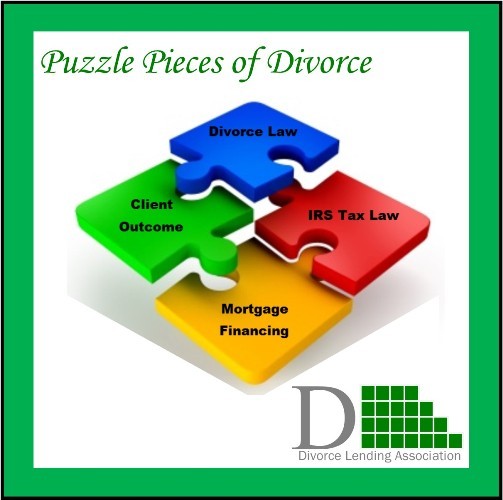Divorce Settlement Blunders Seven Costly Financial Mistakes
Post on: 16 Октябрь, 2015 No Comment

Talk to a Local Family Law Attorney
There are nearly one million divorces in the United States each year. Unfortunately, many divorcing spouses are financially devastated as a result. One reason is that too often, divorcing spouses accept unfair settlements, and find that a few years later they’re experiencing serious financial challenges. Below, are seven of the most costly financial mistakes commonly made during a divorce.
Mistake #1: Not Knowing the Liquidity of Assets
Liquidity refers to your ability to convert an asset into cash. For example, a bank savings account is highly liquid, because you can simply withdraw funds from an ATM when you need them. An antique automobile, however, is illiquid because it’s very difficult to sell this asset quickly and access the actual cash value.
Often, in a divorce settlement, one spouse will receive mostly illiquid assets, including the home, while the other party receives liquid assets such as retirement plans, brokerage accounts etc. The potential problem with this type of settlement has to do with cash flow. How will the spouse that keeps the home pay the bills if his or her major asset is illiquid? In worst-case scenarios, that spouse will have to sell the home, purchase something smaller and use the remaining equity or profits from the sale for living expenses.
If you will end up with very little liquid assets as a result of a proposed financial settlement, be sure that you will have enough cash flow throughout the years to handle your living expenses. If not, you may have to consider selling the home and other assets, or significantly decrease your expenses in order to meet your financial needs.
Mistake #2: Failing to Consider the Impact of Taxes
The effect of your settlement on various taxes can be very costly if not addressed thoroughly. Words like “capital gains, income tax, and alimony” may have a big impact on your tax payment. Capital gains are of particular importance and refer to the fair market value of an asset minus its cost. For example, if you paid $5 for a share of stock and it is now worth $25, you have a capital gain of $20. This applies to other assets such as real estate (including your home), mutual fund accounts and just about any investment that has appreciated in value. Be very careful that the property you’re receiving in a settlement does not have large capital gains as compared with your spouse’s property. Don’t be fooled if your spouse offers you property of equal value but conveniently forgets to inform you of the tax liability. Be sure to consult a tax specialist before agreeing to any settlement proposal.
Mistake #3: Not Understanding the Rules of Retirement Accounts
Retirement accounts raise tax-related issues, but their complexity merits a separate category. Normally, distributions from a retirement plan prior to age 59 1/2 are considered early distributions and are subject to a 10% penalty tax in addition to ordinary income tax. An exception to this rule, however, is a transfer of the retirement plan (or a portion of it) to a spouse as part of a divorce settlement. Depending on the type of retirement plan, you may need a Qualified Domestic Relations Order (QDRO) to complete this transfer. Income taxes still apply, so any assets you receive from a qualified plan, such as a 401(k), will be subject to a mandatory 20% tax withholding. For example, if you are awarded a $100,000 distribution from your spouse’s 401(k), you will actually receive only $80,000. To avoid this mandatory withholding, the transfer must be made directly to another retirement account, such as your own IRA. Once the assets are in your retirement account, you will once again be subject to the early distribution rules. If you need some of the assets to live on, or pay bills, make sure you take them out prior to transferring them to an IRA to avoid the 10% penalty. The division of a retirement account can be very complicated, especially if you need a QDRO. If so, you should contact an experienced attorney that can make sure you’re taking all steps necessary to protect your rights.
Mistake #4: Overlooking Debt and Credit Rating Issues
There’s nothing worse than starting out a new life with bad credit. You can take several steps during the divorce process to minimize the chances of this happening.
- First, obtain a copy of your credit report. This will identify all joint accounts, accounts you may not have been aware of, and any potential credit problems.
- Second, be sure to pay off and close all joint accounts prior to the divorce settlement and open new accounts solely in your name. Unfortunately, creditors don’t care how a separation agreement divides responsibility for joint debt (joint credit cards, auto loans etc.). Each spouse is liable for the full amount of debt until the balance is paid, hence the importance of dealing with this issue prior to your divorce.
- If it is income tax debt, even if the divorce is final, you may not be exempt from future tax liability. For three years after the divorce, the IRS can perform a random audit of a divorced couple’s joint tax return. If it has good cause, the IRS can question a joint return for up to seven years. To avoid any potential problems down the road, your divorce agreement should have provisions that spell out what happens if any additional penalties, interest, or taxes are determined by the IRS as well as where the funds will come from to pay for any expenses associated with an audit.

Mistake #5: Not Maintaining Control Over Insurance Policies
Most divorce judgments call for one of the parties to obtain a life insurance policy to insure the value of alimony payments, child support, or some other financial obligation. If you are the spouse for whom the insurance is obtained, it is critical that you are either the owner or irrevocable beneficiary of the policy. If not, your ex-spouse could easily stop making payments on the policy, and you would never know about it until the policy benefits are needed, but no longer exist. This could be devastating. As the owner or irrevocable beneficiary, you would be notified of any outstanding issues with the policy, such as non-payment of the premium, and could therefore take action and prevent the policy from lapsing or being cancelled.
Mistake #6: Failing to Budget
One of the most common mistakes is the failure to budget based on your post-divorce income and lifestyle. This happens most often when one spouse keeps the home for the sake of the children or perhaps due to an emotional attachment. Because of the high value of the home, there are few other assets awarded in the settlement. The expense of maintaining the home and the lack of liquid assets often results in a rapid depletion of cash, eventually leaving no choice but to sell the home.
This scenario may be avoided if you take a good, hard look at your expenses versus liquid assets and income before you agree to any divorce settlement. A Certified Divorce Financial Analyst (CFDA) can help you project several years into the future and determine if you’ll have enough resources to support your current lifestyle as well as your retirement years. This analysis should be completed prior to a settlement. If it is determined that you will be unable to maintain your lifestyle with the proposed offer, you have established a good case to request more assets, alimony, or child support.
Mistake #7: Failing to Identify Hidden Assets
Hopefully, you’re not in a situation where you distrust your spouse and fear there are hidden assets that should be included in the settlement. Unfortunately, once a divorce is initiated, many spouses will do whatever they can to preserve what they feel is their own money. Some spouses maintain secret accounts or engage in other bad-faith financial activities throughout their entire marriage. If these assets are not uncovered, one spouse is certain to obtain an unfair settlement. Here are a few places to locate hidden assets:
- Tax returns. Go back at least five years to look for any inconsistencies in income, the presence of trusts, partnerships or real estate holdings.
- If your spouse is a business owner, corporate or partnership tax returns may show a change in salary, charging personal expenses to the company, or excessive retained earnings. Another common trick is to put a friend on the payroll, who agrees to give back the money paid after the divorce. A forensic tax professional that can review the business returns and look for hidden income is of tremendous help in this area.
- Checking account statements and cancelled checks. A cancelled check for a purchase you never knew about, such as an investment property, can make a substantial difference in total assets to be divided.
- Savings accounts. These may reveal unusual deposits or withdrawals in an amount or pattern that could point to a hidden asset such as a dividend producing investment.
- Brokerage statements. These are valuable in tracking the purchase and sale of securities.
- Expense accounts. Cross check between expense account disbursements and savings/checking account deposits for any pattern of abuse (eg. if the deposits exceed legitimate business expenditures).
- Children’s bank accounts. These may be opened as a custodial account for the intent of hiding assets as well. In some of these cases, interest is not reported as income on tax returns, and no return is filed for the children.
This is not an exhaustive list of places to look. If you suspect that your spouse has hidden assets, you owe it to yourself to seek help from a financial professional. You should also contact an experienced family law attorney that can help you obtain essential information regarding hidden assets and ensure that your legal rights are fully protected.
For more information on uncovering hidden assets, see How to Find Hidden Assets in Divorce, by Lina Guillen.














